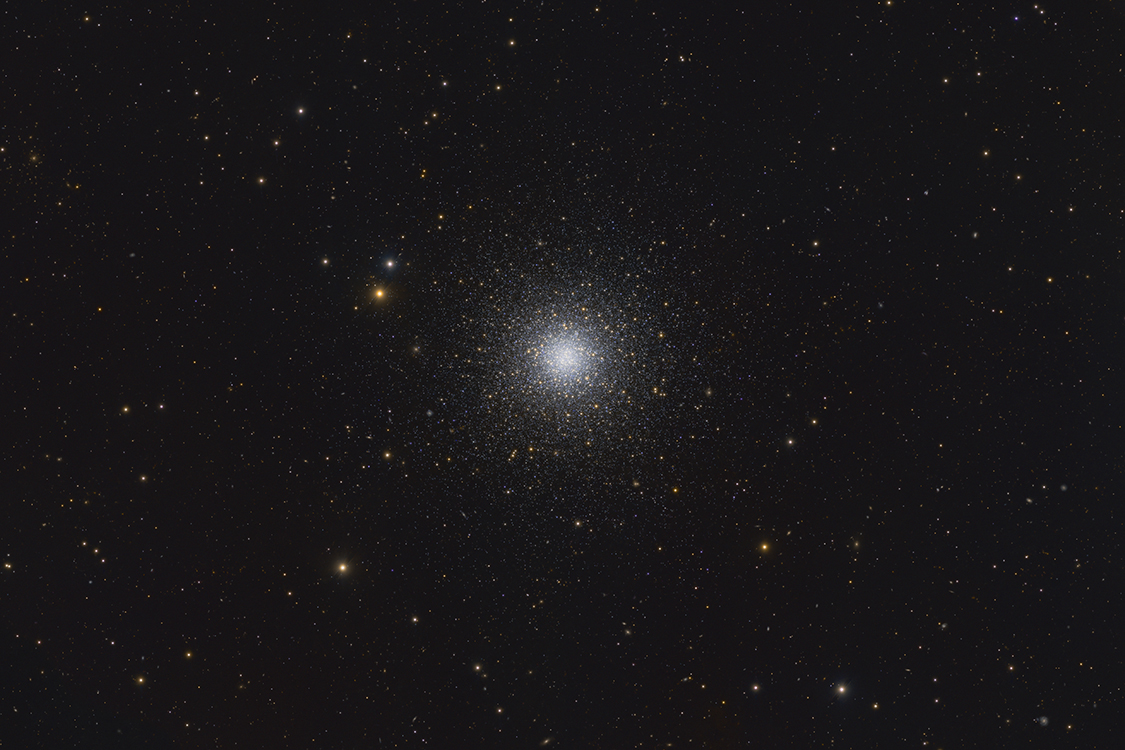
James Janusz 2000 thru 2025 All Rights Reserved |
| Telescope: Astro-Physics 160 Starfire | Description:Messier 53 (also known as M53 or NGC 5024) is a globular cluster in the Coma Berenices constellation. It was discovered by Johann Bode in 1775. M53 is one of the more outlying globular clusters, being about 60,000 light-years (18.4 kpc) away from the Galactic Center, and almost the same distance (about 58,000 light-years (17.9 kpc)) from the Solar System. The cluster has a core radius of 2.18 pc. This is considered a metal-poor cluster and at one time was thought to be the most metal-poor cluster in the Milky Way. Abundance measurements of cluster members on the red giant branch show that most are first-generation stars. That is, they did not form from gas recycled from previous generations of stars in the cluster. This differs from the majority of globular clusters that are more dominated by second generation stars. The second generation stars in NGC 5024 tend to be more concentrated in the core region. Overall, the stellar composition of cluster members is similar to members of the Milky Way halo.The cluster displays various tidal-like features including clumps and ripples around the cluster, and tails along the cluster's orbit in an east–west direction. A tidal bridge-like structure appears to connect M53 with the close, very diffuse neighbor NGC 5053, as well as an envelope surrounding both clusters. These may indicate a dynamic tidal interaction has occurred between the two clusters; a possibly unique occurrence within the Milky Way since there are no known binary clusters within the galaxy. In addition, M53 is a candidate member of the Sagittarius dwarf galaxy tidal stream. (Wiki). |
|---|---|
| Mount: Astro-Physics AP1600 GTO | Constellation:Coma Berenices. |
| Camera: ZWO ASI 6200MM Pro. | Remotely Imaged With Voyager. |
| Guiding:ZWO ASI174 guide Camera and 60mm Guide Scope | Type: Globular Cluster. |
| Exposure: Fifty, Five Minute, RGB, Sub Exposures, each channel. | Position:R.A. 13h 12m 55s Dec +18° 10' 05" |
| Processed using Voyager data aquisition, PixInsight and PhotoShop image processing | Date: May2025 |
| Data Acquisiton, Reduction and Processing by Jim Janusz. | Imaging Location: Maor Observatory at Whitetail Hollow |
-END |
